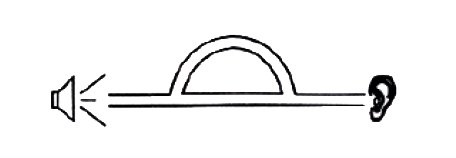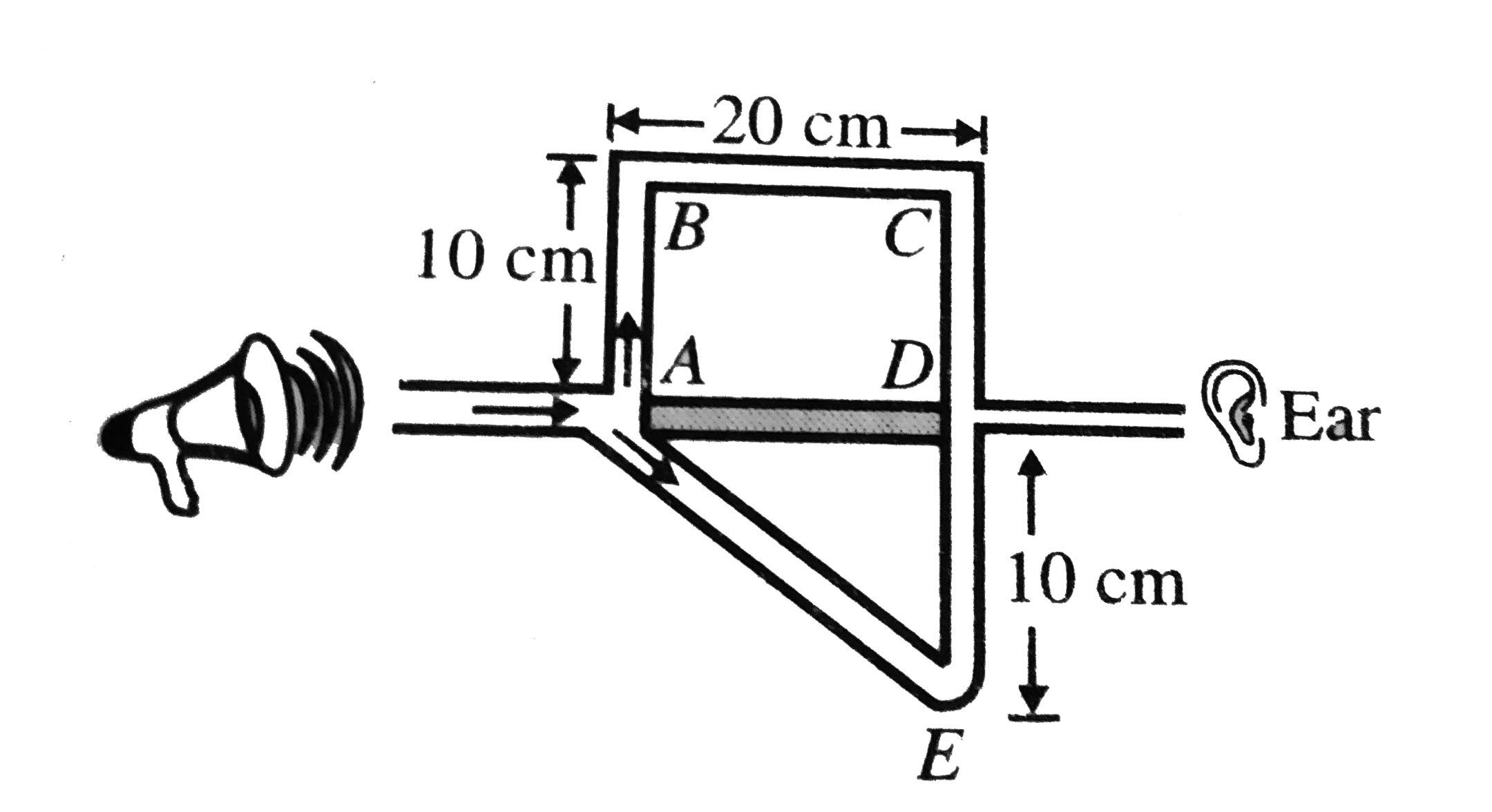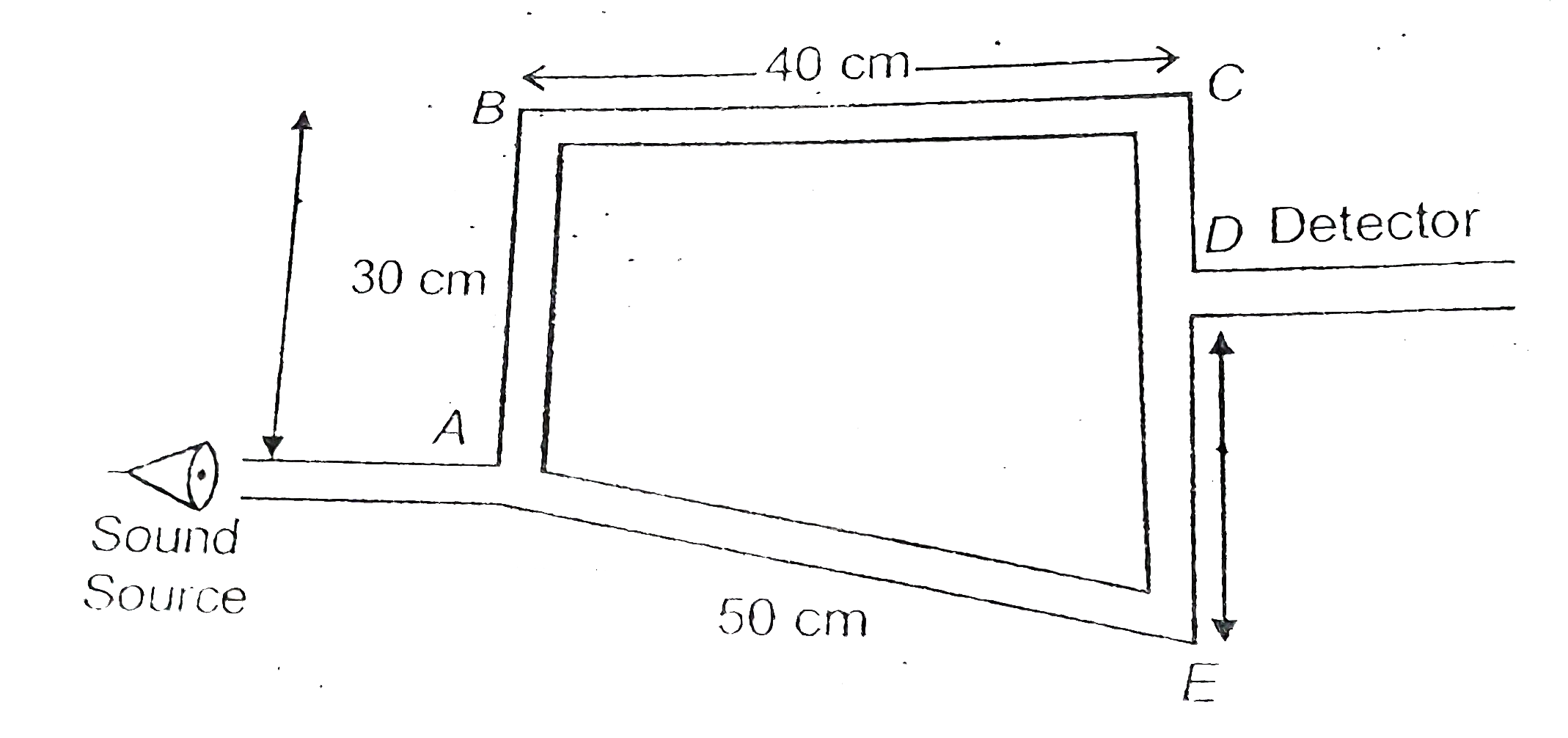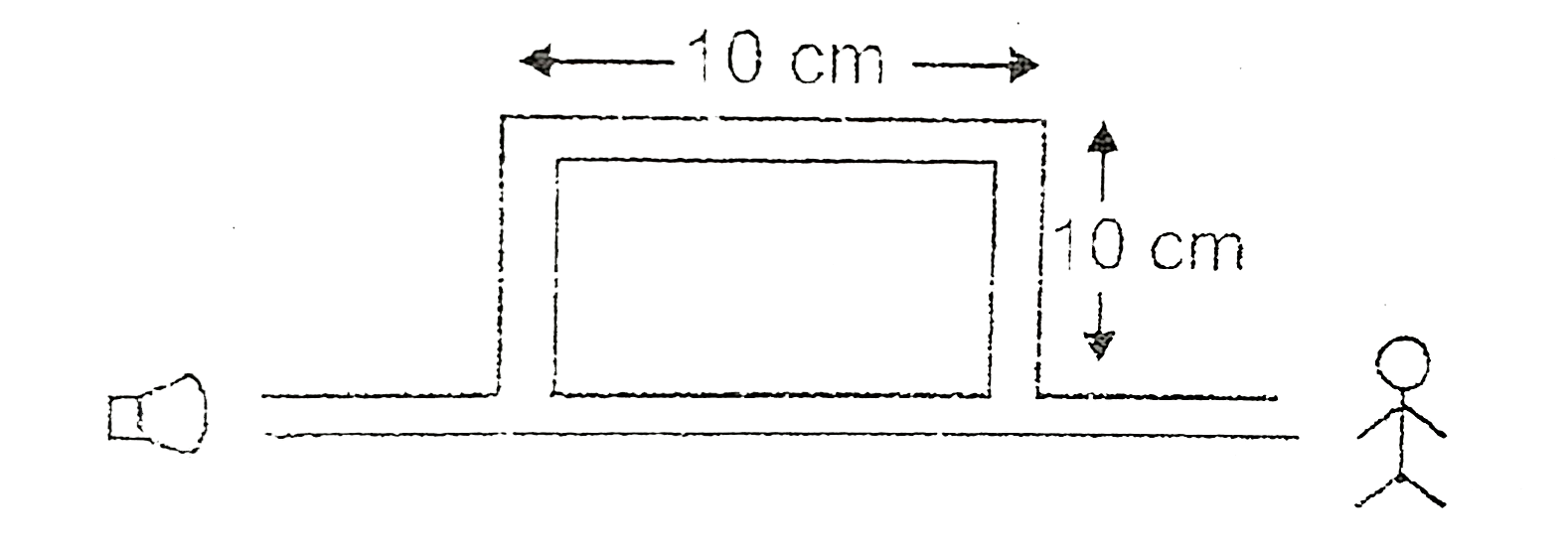Figure 7.75 shows a tube structure in which a sound signal is bent from one end and is received at the other end . The semicircular part has a radius of 20.0cm. The frequency of the sound source can be varied electronically between 1000and4000Hz. Find the frequencies at which maxima of intensity are detected. The speed of sound in air =340m/s.

1490Hzand2980Hz
1490Hz
2980Hz
none
The correct Answer is:A
The sond wave reaches detector by two simultaneously by straight as well as semicircular track. The wave through the straight part travels a distance l1=2×20cm and the wave through the curved part travels a distance l2=π(20cm)=62.8cm before they meet again and travel to the receiver . The path difference between the two waves received is , therefore
Δl=l2−l1=62.8cm−40cm=22.8cm=0.228m
The wavelength of either wave is
vn=340n
For constructive interference , Δl=N/λ, where N is an integer.
⊙228=N(340n)
or n=N(3400.228)=N(1491.2)Hz=N(1490)Hz.
Thus the frequencies within the specified range which cause maxima of intensity are 1490Hzand2980Hz.
Topper's Solved these Questions
- SUPERPOSITION AND STANDING WAVESBook:CENGAGE PHYSICSChapter:SUPERPOSITION AND STANDING WAVESExercise:Single Correct
Explore 144 Videos
- SUPERPOSITION AND STANDING WAVESBook:CENGAGE PHYSICSChapter:SUPERPOSITION AND STANDING WAVESExercise:Multiple
Explore 26 Videos
- SUPERPOSITION AND STANDING WAVESBook:CENGAGE PHYSICSChapter:SUPERPOSITION AND STANDING WAVESExercise:Exercise 7.2
Explore 32 Videos
- SOUND WAVES AND DOPPLER EFFECTBook:CENGAGE PHYSICSChapter:SOUND WAVES AND DOPPLER EFFECTExercise:Integer
Explore 16 Videos
- THERMODYNAMICSBook:CENGAGE PHYSICSChapter:THERMODYNAMICSExercise:24
Explore 1 Video
Similar Questions
Figure shows a tube structure in which a sund signal is sent from one end and is received at the other end.The semicircular part has a radius of 20.0 cm. The frequency ohet sound source can be varied elertronically between 1000 and 4000 Hz. Find the frequencies at which maxima of intensity are detected. The speed of sound in air =3400ms^-1.

View SolutionFigure shows a tube structure in which a sound signal is sent from one end and is received at the other end. The semicircular part has a radius of 10.0 cm. The frequency of the sound source can be varied from 1 to 10 kHz. Find the frequencies at which the ear perceives maximum intensity. The speed of sound in air =342m/s

View Solution
Knowledge Check
If pipe open at both the ends has an effective length of 0.5m, then the frequency of the note which is octave its fundamental frequency will be (Velocity of sound in air is 340m/s)
A170HzB340HzC510HzD680Hz
Figure 7.20 shows a tube structure in which signal is sent from one end and is received at the other end . The frequency of the sound source can be varied electronically between 2000→5000Hz. Find the frequencies at which maxima of intensity are detected . The speed of sound in air 340m/s.

View SolutionAn electronically driven loudspeaker is placed near the open end of a resonance column apparatus. The length of air column in the tube is 80 cm. The frequency of the loudspeaker can be varied between 20 Hz and 2 kHz. Find the frequencies at which the column will resonate. Speed of sound in air =320ms−1
View SolutionIn the shown figure ABCDE is a tube which is open at A and D. A soruce of sound A is placed in front of A. if frequency of the source can be varried from 2000 Hz to 4000 Hz. Find frequencies at which a detector placed in front of D receives a maxima of intensity.
(Given speed of sound =340m/s)

View SolutionA cylindrical metal tube has a length of 50 cm and is open at both ends. Find the frequencies between 1000 Hz and 2000 Hz at which the air column in the tube can resonate. Speed of sound in air is 340ms−1.
View SolutionFind the fundamental, first overtone and second overtone frequencies of an open organ pipe of length 20 cm. Speed of sound in air is 340ms−1.
View SolutionFigure shows a tube having sound source at one end and observe at other end. Source produces frequencies upto 10000Hz. Speed of sound is 400m/s. Find the frequencies at which person hears maximum intensity.

View SolutionA closed organ pipe can vibrate at a minimum frequency of 500 Hz. Find the length of the tube. Speed of sound in air =340ms−1.
View Solution